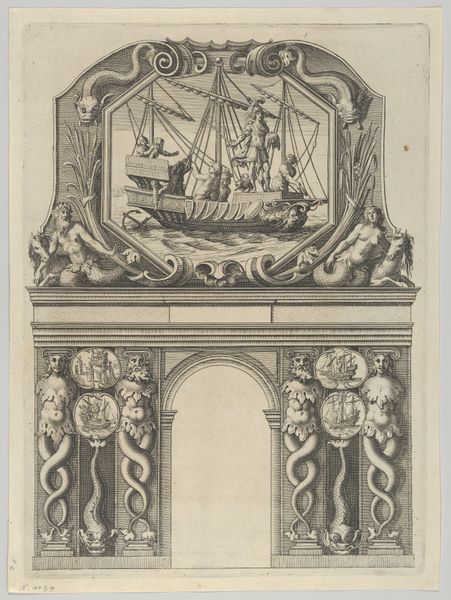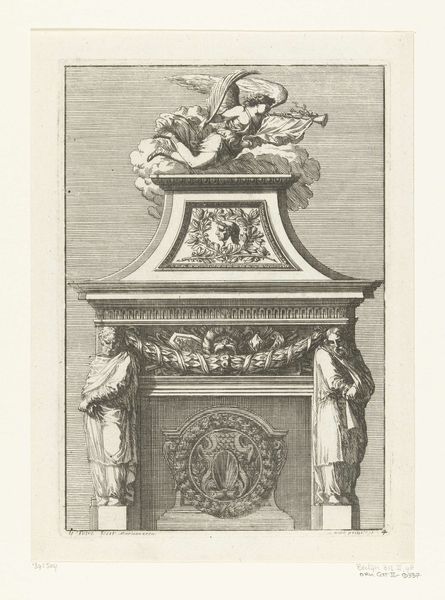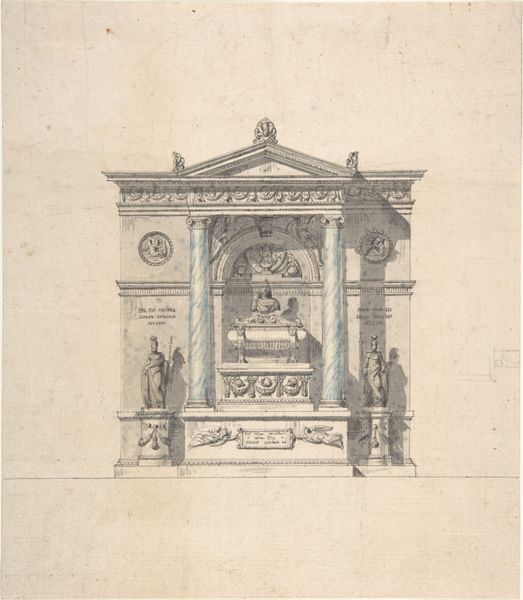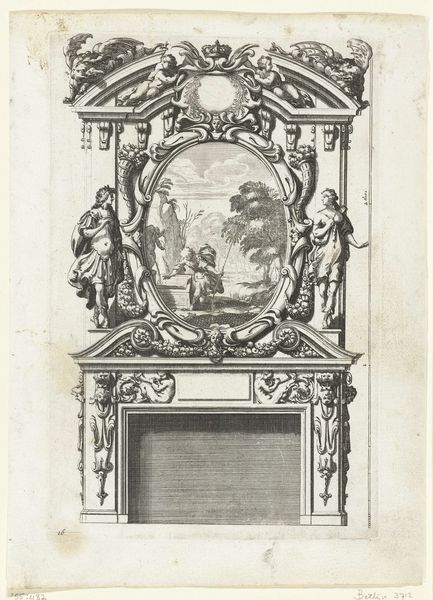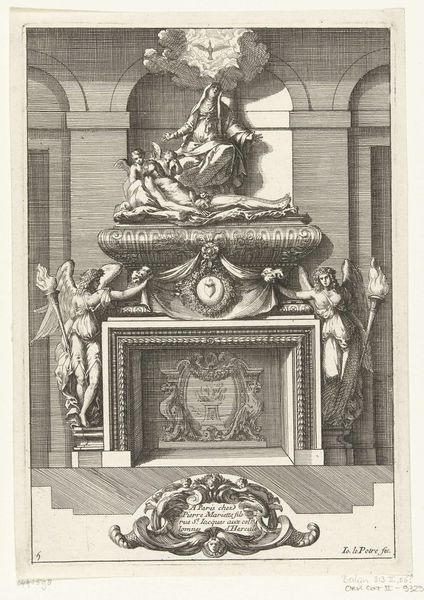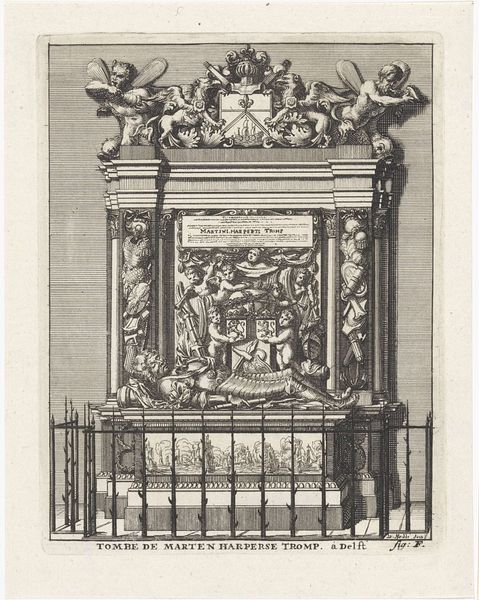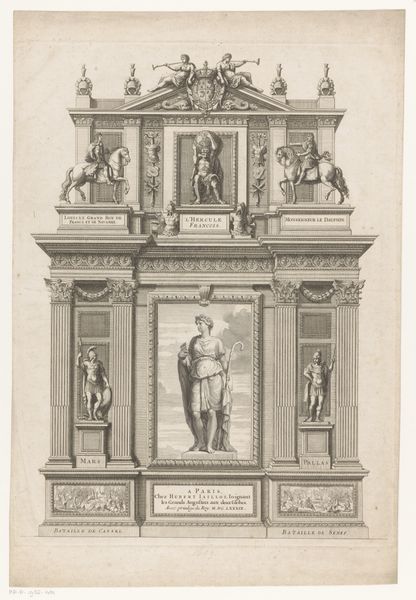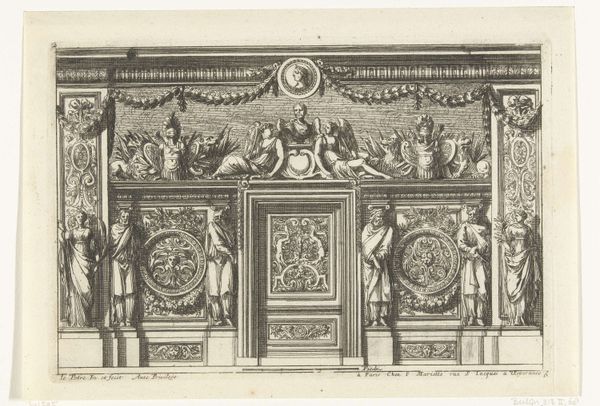
Dimensions: height 271 mm, width 186 mm
Copyright: Rijks Museum: Open Domain
This print, made in 1795 by A. Schol, depicts a temporary monument erected on the Nieuwmarkt in Amsterdam. It celebrates commerce and seafaring. At this time, the Dutch Republic was in turmoil. The image creates meaning through a combination of visual codes and historical associations. We can see a ship, which is a symbol of trade and Dutch maritime power, at the top of the monument. Below is an image of what seems to be a maritime transaction. Figures in the foreground are sealing a deal under the watchful gaze of Neptune. The Dutch Republic’s prosperity was founded on overseas trade. In the 1790s the nation’s economic supremacy was threatened by war with Britain. This monument sought to reaffirm traditional values in a time of crisis. In 1795 the Batavian Republic was proclaimed, marking a new era of French influence and revolutionary ideals. To understand this artwork better, we can look at period documents, economic data, and political pamphlets. By studying such historical sources, we can see how art is bound up with the social and institutional contexts in which it is made.
Comments
No comments
Be the first to comment and join the conversation on the ultimate creative platform.
